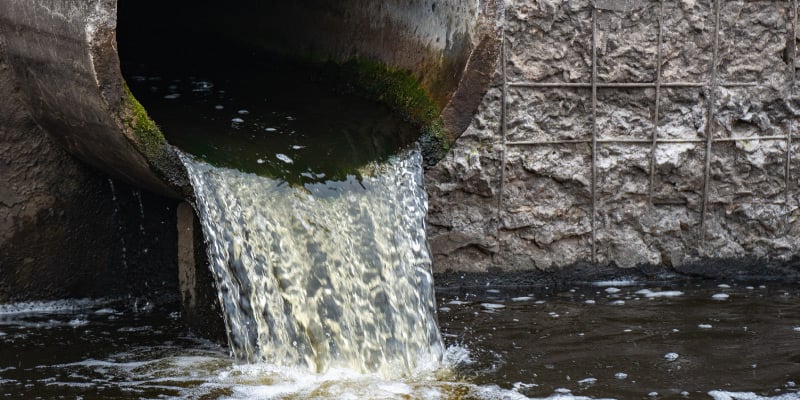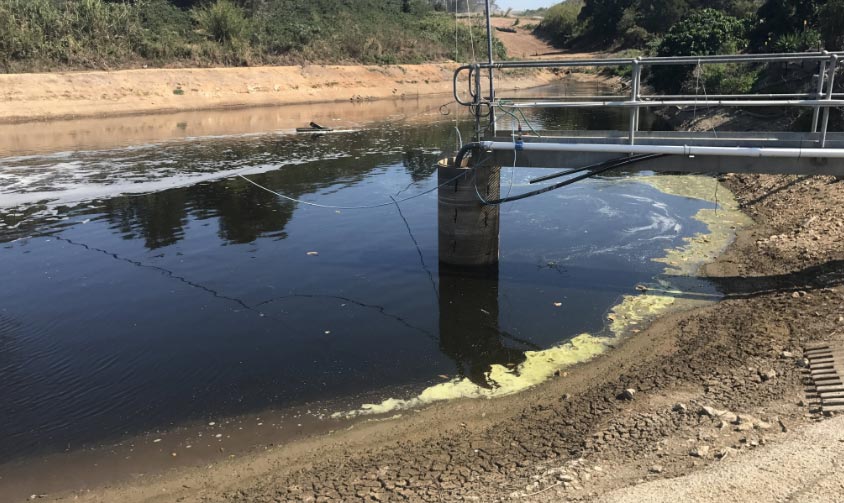Leading Industrial Wastewater Treatment Solutions: Ensuring Conformity and Efficiency
Leading Industrial Wastewater Treatment Solutions: Ensuring Conformity and Efficiency
Blog Article
Just How Fluid Garbage Disposal Works: A Comprehensive Review of Methods and Technologies Employed

Summary of Fluid Waste Kind
The intricacy of fluid waste types necessitates a thorough understanding of their qualities and effects for disposal. Liquid waste can broadly be categorized into several types, consisting of commercial, municipal, agricultural, and dangerous waste. Each classification shows distinctive residential or commercial properties, requiring specific administration approaches to reduce environmental and health dangers.
Industrial fluid waste stems from making procedures and usually has a series of pollutants, such as heavy metals, solvents, and natural compounds. Local liquid waste, largely consisting of wastewater from homes and commercial establishments, consists of organic matter, nutrients, and virus (industrial wastewater treatment). Agricultural fluid waste, including runoff from farms, might consist of fertilizers, pesticides, and animal waste, posing dangers to water top quality and ecosystems
Hazardous fluid waste is identified by its poisoning, sensitivity, or potential to create injury. This classification includes materials like acids, bases, and certain chemicals that require rigid handling and disposal procedures. Recognizing these diverse liquid waste kinds is essential for creating efficient disposal methods and making sure conformity with environmental guidelines. Proper classification and characterization are important for executing appropriate therapy methods and lessening the unfavorable effect on public health and wellness and the atmosphere.
Physical Treatment Techniques

Screening is the preliminary action, where bigger bits and particles are eliminated from the liquid waste making use of screens or grates. This procedure protects downstream tools from damages and guarantees smoother operation. Complying with testing, sedimentation utilizes gravitational force to separate solids from fluids. In sedimentation storage tanks, larger particles work out near the bottom, forming a sludge layer, while the made clear fluid can be more treated.
Purification is another vital method that includes passing the liquid via porous materials, such as sand or membranes, to record smaller bits. This action improves the top quality of the fluid, making it appropriate for subsequent treatment procedures.

Chemical Therapy Strategies
Chemical therapy methods are important for successfully managing fluid waste, specifically in addressing liquified and colloidal pollutants that physical approaches may not sufficiently eliminate. These methods utilize different chemical agents to reduce the effects of, precipitate, or change dangerous materials right into much less unsafe forms.
One typical method is coagulation and flocculation, where chemicals such as alum or ferric chloride are contributed to promote the aggregation of suspended fragments. This procedure boosts sedimentation, enabling easier elimination of the resulting sludge. Furthermore, oxidation processes, using representatives like chlorine or ozone, are utilized to damage down complicated additional info organic substances and pathogens, making the waste safer for discharge or additional therapy.
Neutralization is one more vital method, which adjusts the pH of acidic or alkaline waste streams to neutral levels, preventing possible injury to downstream systems and the environment. Furthermore, advanced oxidation procedures (AOPs) use combinations of oxidants and ultraviolet light to deteriorate relentless pollutants, achieving a higher degree of therapy effectiveness.
Biological Treatment Processes
Organic therapy procedures play an essential function in the monitoring of fluid waste by making use of microorganisms to decay natural matter and minimize impurity levels. These procedures can be generally classified into anaerobic and aerobic treatments, each employing particular microbial communities to achieve effective waste destruction.
Cardio therapy involves using oxygen to assist in the breakdown of organic materials by germs. This procedure is commonly applied in triggered sludge systems, where aeration storage tanks provide a helpful setting for microbial growth, causing the oxidation of natural pollutants. The resultant biomass can be separated from treated effluent with sedimentation.
On the other hand, anaerobic therapy occurs in the absence of oxygen, counting on various microorganisms to break down raw material. This technique is particularly useful for high-strength waste, as it generates biogas, a renewable resource resource, while minimizing sludge production. Technologies such as anaerobic digesters are frequently used in industrial and local applications.
Both aerobic and anaerobic biological treatments not only reduce the ecological impact of liquid waste yet additionally promote source recovery, making them vital elements of lasting waste administration strategies. Their effectiveness, effectiveness, and versatility sustain their widespread implementation throughout numerous fields.
Arising Technologies in Disposal
Ingenious strategies to fluid garbage disposal are swiftly evolving, driven by developments in technology and a boosting focus on sustainability. Among these emerging technologies, membrane layer bioreactors (MBRs) have gotten grip for their capability to incorporate organic treatment with membrane layer purification, causing high-quality effluent that can be reused in various applications. MBRs allow smaller footprints and much more effective operations contrasted to standard systems.
One more encouraging advancement Look At This is making use of anaerobic food digestion combined with nutrient recovery innovations, which not only deals with fluid waste but likewise creates biogas and recuperates valuable nutrients like nitrogen and phosphorus. This double benefit boosts resource performance and decreases ecological effect.
Additionally, advanced oxidation procedures (AOPs) are being embraced for the destruction of complicated natural contaminants. These techniques make use of powerful oxidants and drivers to damage down pollutants at the molecular degree, using a very effective option for tough waste streams.
In addition, the integration of synthetic knowledge and artificial intelligence in waste administration systems is enhancing functional effectiveness and predictive maintenance, bring about reduced expenses and improved environmental compliance. These modern technologies mirror a considerable shift in the direction of even more efficient and lasting fluid waste disposal practices.
Conclusion
Finally, reliable liquid garbage disposal necessitates a comprehensive useful reference understanding of various strategies and technologies. The combination of physical, chemical, and biological therapy techniques makes sure the effective monitoring of varied waste types. In addition, the emergence of cutting-edge innovations improves treatment effectiveness and promotes sustainability in waste management techniques. By continually progressing these methods, it ends up being feasible to resolve the expanding difficulties related to liquid waste, inevitably contributing to ecological defense and source recuperation.
Liquid waste disposal is a crucial aspect of ecological management, requiring a detailed understanding of different methods and technologies tailored to various waste types. Liquid waste can extensively be classified right into numerous kinds, including commercial, local, agricultural, and harmful waste. Agricultural fluid waste, consisting of runoff from ranches, might have fertilizers, chemicals, and animal waste, positioning threats to water top quality and ecosystems.
Various physical treatment approaches play an important function in managing fluid waste properly - industrial wastewater treatment.In conclusion, effective fluid waste disposal necessitates a detailed understanding of various strategies and innovations
Report this page